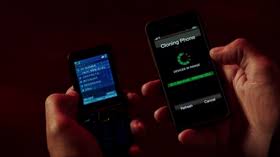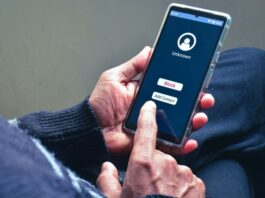 In the digital age, the forced pairing of cell phones has become a topic of intrigue and concern. Popularized by the TV series “Person of Interest,” this concept involves connecting two cell phones so that one device can intercept and monitor the communications of the other. This article explores the mechanics of forced pairing, the technical aspects behind it, its practical applications, and the implications for privacy and security.
In the digital age, the forced pairing of cell phones has become a topic of intrigue and concern. Popularized by the TV series “Person of Interest,” this concept involves connecting two cell phones so that one device can intercept and monitor the communications of the other. This article explores the mechanics of forced pairing, the technical aspects behind it, its practical applications, and the implications for privacy and security.
What Is Forced Pairing?
Forced pairing refers to the unauthorized connection between two cell phones, allowing one device to eavesdrop on the communications and data of the other. This typically involves exploiting vulnerabilities in Bluetooth or other wireless communication protocols.
Unlike legitimate pairing, which requires mutual consent and the exchange of security keys, forced pairing circumvents these security measures to establish a connection without the target user’s knowledge.
Key Concepts
- Bluetooth Technology: A wireless technology standard used for exchanging data over short distances. It is commonly used for pairing devices such as phones, headsets, and speakers.
- Man-in-the-Middle (MitM) Attack: A type of eavesdropping where the attacker intercepts and relays communications between two parties who believe they are directly communicating with each other.
- Exploiting Vulnerabilities: Using software or hardware flaws to gain unauthorized access to a device.
How Forced Pairing Works

Step 1: Initiating the Pairing Process
The process begins with the attacker initiating a pairing request from their phone to the target phone. Normally, pairing requires mutual consent and the exchange of security keys. However, in forced pairing, the attacker employs various methods to bypass these security checks.
Step 2: Exploiting Bluetooth Vulnerabilities
Bluetooth has several vulnerabilities that can be exploited for forced pairing. Some common techniques include:
- Bluejacking: Sending unsolicited messages to Bluetooth-enabled devices.
- Bluesnarfing: Gaining unauthorized access to a device’s data.
- Bluebugging: Taking control of a device to make calls, send messages, or access data.
Step 3: Establishing a Connection
Once the initial security barriers are bypassed, the attacker establishes a Bluetooth connection with the target phone. This connection allows the attacker to access the phone’s data and monitor communications.
Step 4: Intercepting Communications
With the connection established, the attacker can intercept and monitor various forms of communication, including calls, text messages, and internet activity. This is typically done through software installed on the attacker’s phone that captures and relays the data.
Practical Applications
Here are some of the practical applications of a forced pairing of cell phones of the person of interest or someone that’s to be tracked/monitored:
Surveillance and Espionage
Forced pairing can be used for surveillance and espionage, allowing authorities or malicious actors to monitor individuals’ communications without their knowledge. This can be particularly useful in tracking suspects or gathering intelligence.
Security Testing
Security professionals may use forced pairing techniques to test the robustness of security measures in place on devices and networks. By identifying vulnerabilities through such testing, they can implement stronger security protocols to protect against unauthorized access.
Corporate Espionage
In the corporate world, forced pairing can be employed to gain competitive intelligence by intercepting communications of rival companies. This illegal practice can lead to the theft of sensitive information, trade secrets, and strategic plans.
Technical Aspects of Forced Pairing
Bluetooth Low Energy (BLE) Exploits
Bluetooth Low Energy (BLE) is a wireless communication protocol designed for low power consumption. While BLE is generally secure, it is not immune to exploits. Attackers can use BLE exploits to force pair with target devices, especially if the devices are not using the latest security patches.
Man-in-the-Middle Attacks
In a Man-in-the-Middle (MitM) attack, the attacker intercepts communications between two devices. For forced pairing, the attacker positions themselves between the target phone and the legitimate communication endpoint, relaying and potentially altering the communication.
Signal Jamming
Signal jamming involves disrupting the communication between devices by overwhelming the frequency with noise. This can force the target device to reconnect, during which the attacker can attempt to pair their device with the target.
Implications for Privacy and Security
Privacy Concerns
Forced pairing poses significant privacy concerns. Unauthorized access to personal communications, photos, and other sensitive data can lead to identity theft, stalking, and other malicious activities. Users must be aware of the risks and take steps to secure their devices.
Legal and Ethical Issues
Forced pairing is generally illegal, as it involves unauthorized access to another person’s device. Engaging in such activities can lead to severe legal consequences, including fines and imprisonment. Ethically, it violates the principle of respecting others’ privacy and autonomy.
Security Measures
To protect against forced pairing, users should implement the following security measures:
- Regular Software Updates: Keep your phone’s operating system and apps updated to the latest versions, as updates often include security patches.
- Disable Bluetooth When Not in Use: Turning off Bluetooth when not needed reduces the risk of unauthorized pairing.
- Use Strong Passwords: Ensure that your phone is protected by a strong, unique password or biometric authentication.
- Monitor Paired Devices: Regularly check the list of paired devices on your phone and remove any that you do not recognize.
Conclusion
The forced pairing of cell phones, while intriguing as a concept, represents a serious threat to privacy and security. Understanding how it works and the methods used by attackers can help users better protect themselves. By implementing strong security measures and staying informed about potential vulnerabilities, individuals can safeguard their communications and personal data against unauthorized access.
Forced pairing may have been popularized by TV shows like “Person of Interest,” but its implications are very real. As technology continues to evolve, so too must our efforts to protect ourselves from such sophisticated attacks. Remember, vigilance and proactive security practices are your best defenses against forced pairing and other forms of cyber intrusion.






